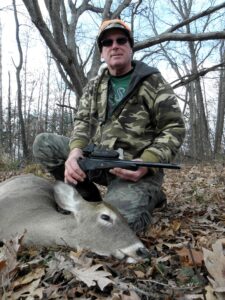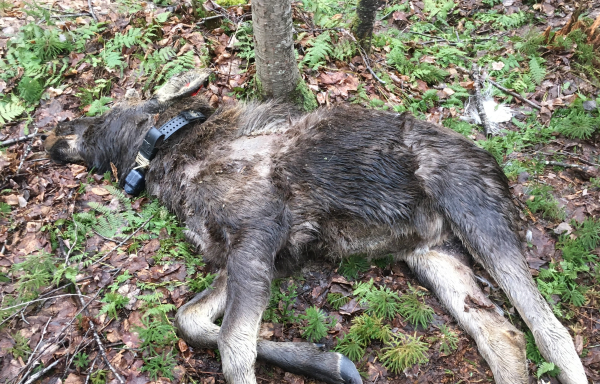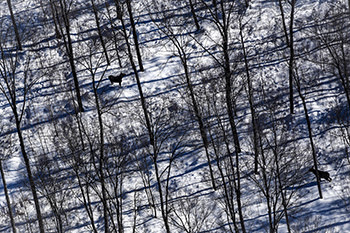Michigan Should Reduce the Cost of Antlerless Permits
By Glen Wunderlich
Charter Member Professional Outdoor Media Association (POMA)
A few days ago came an email from Chad Stewart, deer, elk and moose management specialist of Michigan’s Department of Natural Resources. In the ominous preface to a detailed analysis of the over-population of the state’s deer herd, he arrives at a conclusion that might not sit well with some hunters: More antlerless deer must be taken for the betterment of our deer herd.

T/C Contender in .45/70 Custom JDJ Barrel and EOTech Optic and Michigan Doe
If this bit of information comes at a surprise, you haven’t been paying attention.
After a bit of research into my personal archives, the DNR had strongly encouraged hunters to kill more antlerless deer with this language 14 years ago: High numbers of antlerless permits are available again this year… Hunters are encouraged to harvest antlerless deer, especially on private land in the Southern Lower Peninsula to bring populations closer to goals and to help address concerns of excessive crop damage and deer-vehicle collisions.
I wrote in 2009: “What’s so funny about the statement is that hunters are encouraged to harvest antlerless deer after the fee to do so has been increased by 50 percent. …it’s not likely that any noteworthy reduction in the problematic herd will be achieved through its counter-productive revenue enhancement strategy.”
Nonetheless, Mr. Stewart lays out his case with statistics that paint a bleak picture, if hunters don’t change their strategy. He states that the typical Michigan hunting philosophy to date is to hold off on taking antlerless deer until later in the season. Heck, that’s sure been my thinking.
Every other year since 2009, we’ve taken more antlered deer than antlerless deer. A comparison with the states around us, such as Illinois, Ohio, Indiana and Wisconsin, they all typically harvest between 8 percent to 25 percent more antlerless deer than they do antlered deer in a given year. Although Mr. Stewart does not connect today’s over-population to the 2009 cost-doubling of antlerless tags, I believe it was another straw on the camel’s back.
Because of our lower hunter numbers and our continued unwillingness to shoot antlerless deer, we are shooting far fewer antlerless deer than we have historically. This past year was probably a record year in terms of the number of damage complaints our department received from farmers, and associated crop damage. The [the DNR] mitigates this damage by providing out-of-season permits so those landowners experiencing damage can help protect their crops and livelihood. Since very few hunters like the idea of deer being shot out of season, we hunters need to do better at controlling deer numbers in the hunting seasons.
In 2022 there were nearly 59,000 reported deer-vehicle collisions, the highest number since 2009. Nearly 20 percent of the recorded collisions in Michigan involved white-tailed deer. So again, there’s the reference to the year 2009 when the cost to help our own cause doubled.
For decades, Michigan intentionally grew its deer herd and bragged that herd would grow to one million deer! They were so excited back then as the freight train gained momentum. The old-timers wouldn’t shoot a doe no matter what, and although the philosophy has changed somewhat today, that train is still destined to run off the tracks.
In summary, we have the supply but not the demand and no amount of pleading has helped.
My solution now, as it was back then, is to drastically lower the cost of antlerless permits to increase sales. Increased volume could put us on a path to better herd management, and it wouldn’t take long to discover the truth now that hunters are required by law to submit kill data. For cost-reduction to be enough is anyone’s guess, but one thing is certain: What we are doing – and, have been doing – doesn’t work.






